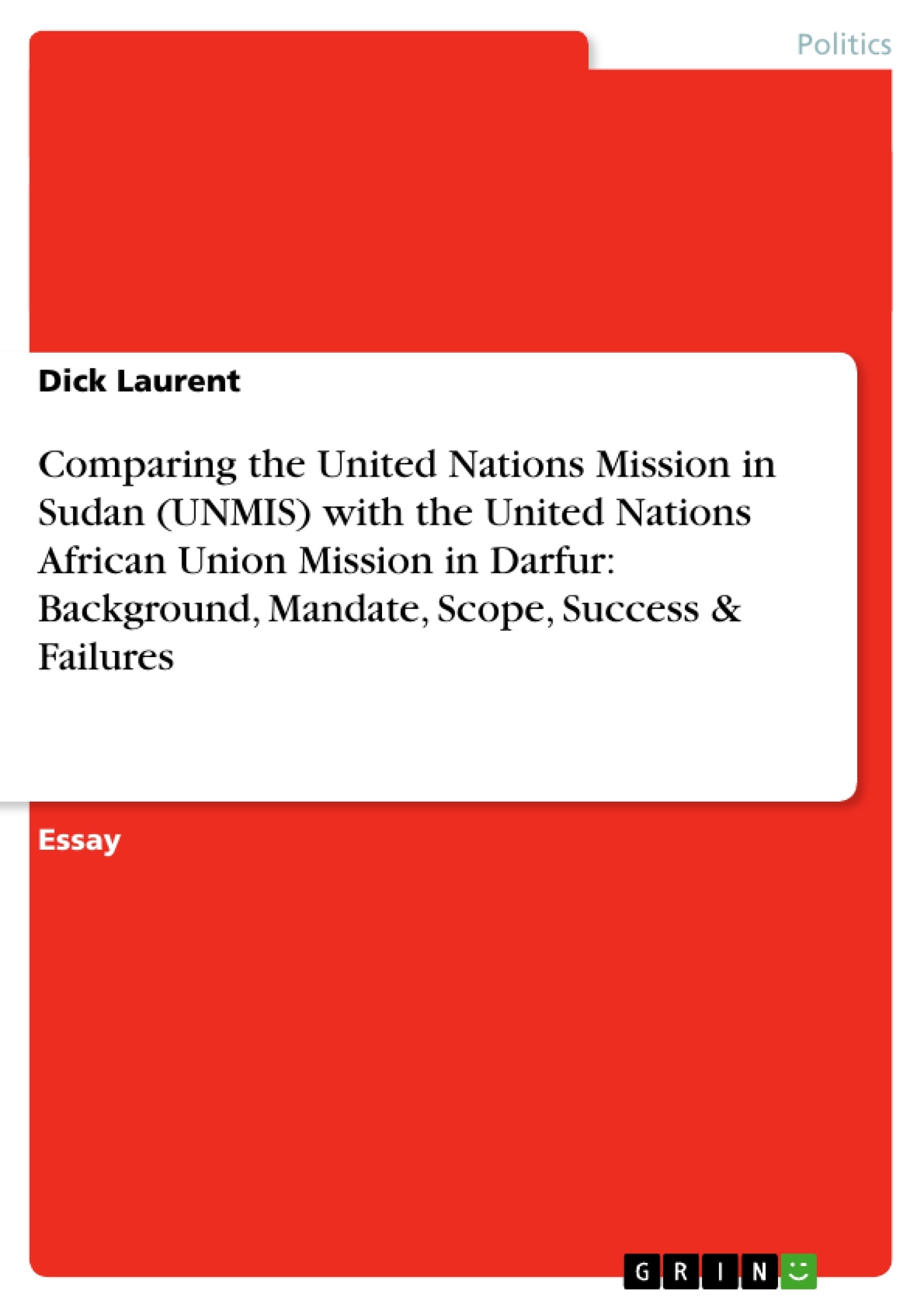Two massive UN missions in the largest African country, Sudan. The paper systematically compares the UNMIS in Southern Sudan and UNAMID in Darfur. The analysis starts at the background of the conflicts that led to both UN operations. Consequently, the design of the UN mandates are compared, as well as the scope of the resources on the ground. The paper concludes with the status quo and an analysis of the success and failures of both missions.
The author was working in Southern Sudan for 6 months for an international NGO.
Inhaltsverzeichnis (Table of Contents)
- Part I. Conflict background and point of entry for the UN
- A. UNMIS (North/South Sudan) – A periphery vs. centre war with roots in the colonial history of Sudan. Fighting for political and economical development.
- B. UNAMID (Darfur) The Darfur conflicts shows similar patterns as the North-South conflict: a struggle for political participation and economical development.
- Part II. Design of the mandate
- A. UNMIS (North/South Sudan) - A monitoring mission supporting the implementation of the CPA without teeth to protect civilians.
- B. UNAMID (Darfur) – The international community intervening with a delay of five years; Solving an African problem with African means?
- Part III. Scope of the mission
- A. UNMIS (North/South Sudan)
- B. UNAMID (Darfur) – Largest, most expensive UN-mission with famous delays.
- Part IV. The current situation, success and failures
- A. UNMIS (North/South Sudan)
Zielsetzung und Themenschwerpunkte (Objectives and Key Themes)
This text examines the intervention of the United Nations in Sudan, specifically analyzing the UN Mission in Sudan (UNMIS) and the United Nations African Union Mission in Darfur (UNAMID). It explores the background of the conflicts, the design of the UN missions' mandates, the scope of their operations, and ultimately, their success and failures. The analysis focuses on the complex dynamics of the conflicts, the role of international actors, and the effectiveness of UN peacekeeping efforts.
- The complex political, economic, and social causes of the conflicts in Sudan.
- The design and implementation of UN peacekeeping mandates in Sudan.
- The challenges and complexities of international intervention in conflict zones.
- The effectiveness of UN peacekeeping operations in achieving peace and stability.
- The impact of UN missions on the lives of civilians in Sudan.
Zusammenfassung der Kapitel (Chapter Summaries)
Part I delves into the historical context of the conflicts in Sudan, specifically highlighting the North/South conflict and the Darfur crisis. Both conflicts are presented as struggles for power and economic development, stemming from colonial history and ongoing tensions. The section analyzes the triggers of the conflicts and the factors leading to UN intervention.
Part II examines the design of the UN missions' mandates. The UNMIS mandate for South Sudan is characterized as a monitoring mission focused on implementing the Comprehensive Peace Agreement (CPA), with limited powers to protect civilians. In contrast, the UNAMID mandate in Darfur, established after significant delays, grants the mission more authority, including the protection of civilians under Chapter VII of the UN Charter.
Part III provides an overview of the scope of the UN missions. UNMIS is presented as a relatively smaller operation with a focus on monitoring and support, while UNAMID emerges as the largest and most expensive UN mission with a broader mandate and significant challenges in deployment due to Sudanese government restrictions. The section discusses the challenges of resource allocation and the complexities of managing such large-scale operations.
Part IV briefly touches on the current situation in South Sudan, focusing on the ongoing conflicts and the complexities of achieving lasting peace. It highlights the limitations of UNMIS in guaranteeing security and the need for continued international attention and support. The section utilizes an analysis framework developed by Van der Ljin to assess the success of UNMIS and UNAMID, emphasizing the importance of party willingness, international cooperation, and the provision of security.
Schlüsselwörter (Keywords)
This text focuses on key terms and concepts related to UN peacekeeping operations in Sudan, including the North/South conflict, the Darfur crisis, the Comprehensive Peace Agreement (CPA), the Darfur Peace Agreement (DPA), UNMIS, UNAMID, the International Criminal Court (ICC), the Responsibility to Protect (R2P), human security, and the role of international actors. It also examines issues of power dynamics, economic development, ethnic tensions, the protection of civilians, and the challenges of achieving lasting peace in a complex conflict environment.
- Arbeit zitieren
- Dick Laurent (Autor:in), 2010, Comparing the United Nations Mission in Sudan (UNMIS) with the United Nations African Union Mission in Darfur: Background, Mandate, Scope, Success & Failures, München, GRIN Verlag, https://www.grin.com/document/151871



